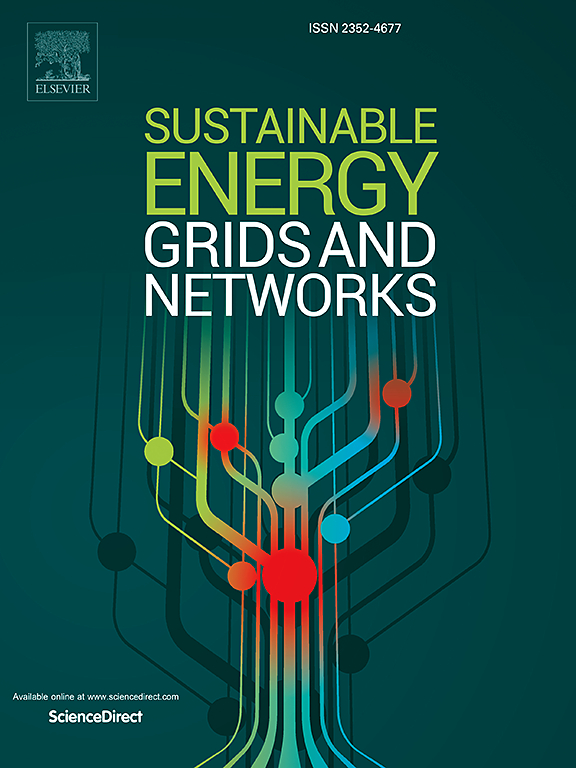配电系统弹性:电力系统营运商的观点
IF 5.6
2区 工程技术
Q2 ENERGY & FUELS
引用次数: 0
摘要
全球气温上升导致气候不确定性增加,导致高影响低概率的极端天气事件,对关键的电力系统基础设施构成重大挑战。电力系统的恢复能力是将这些事件的影响降到最低,同时在事件发生期间保持基本服务的能力。弹性可以大致分为运营弹性和基础设施弹性。虽然现有的研究主要集中在运营部分,因为它确保了电力供应的连续性,但缺乏全面的方法和指标来有效地量化基础设施的弹性。然而,基础设施弹性对电力系统运营商至关重要,因为它衡量基础设施组件的质量。本文介绍了一种系统的方法,通过逐步基于度量的框架来定义和量化运营和基础设施弹性,同时关注基础设施弹性的改进。为了验证所提出的模型,分析了不同极端风速条件下的多个模拟场景。结果证明了所开发的指标在评估电力系统弹性方面的有效性,并为潜在的增强策略提供了有价值的见解。本文为改进电力系统运行中的弹性评估和决策提供了一种基础方法。本文章由计算机程序翻译,如有差异,请以英文原文为准。
Power distribution system resilience: A perspective of the power system operator
The increasing global temperature has led to heightened climate uncertainties, resulting in high-impact low-probability extreme weather events that pose significant challenges to critical power system infrastructure. Resilience of power systems is the capability to minimize the impact of these events while maintaining essential services during the events. Resilience can be broadly categorised into operational resilience and infrastructural resilience. Although existing research focuses extensively on operational part as it ensures continuity of power supply to the customers, but lacks comprehensive methodologies and metrics to effectively quantify infrastructural resilience. However, infrastructural resilience is vital for power system operators as it measures the quality of infrastructural components. This paper introduces a systematic approach to define and quantify both operational and infrastructural resilience through a stepwise metric-based framework, while focusing on the improvement of infrastructural resilience. To validate the proposed model, multiple simulation scenarios under varying extreme wind speed conditions are analysed. The results demonstrate the effectiveness of the developed metrics in assessing power system resilience and offer valuable insights into potential enhancement strategies. This paper provides a foundational methodology for improving resilience assessment and decision-making in power system operations.
求助全文
通过发布文献求助,成功后即可免费获取论文全文。
去求助
来源期刊

Sustainable Energy Grids & Networks
Energy-Energy Engineering and Power Technology
CiteScore
7.90
自引率
13.00%
发文量
206
审稿时长
49 days
期刊介绍:
Sustainable Energy, Grids and Networks (SEGAN)is an international peer-reviewed publication for theoretical and applied research dealing with energy, information grids and power networks, including smart grids from super to micro grid scales. SEGAN welcomes papers describing fundamental advances in mathematical, statistical or computational methods with application to power and energy systems, as well as papers on applications, computation and modeling in the areas of electrical and energy systems with coupled information and communication technologies.
 求助内容:
求助内容: 应助结果提醒方式:
应助结果提醒方式:


